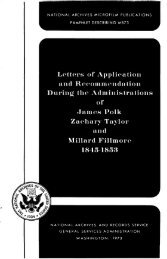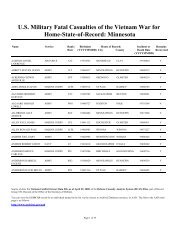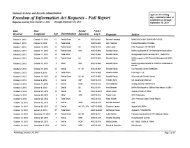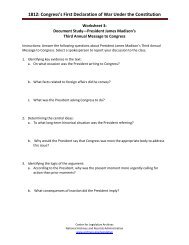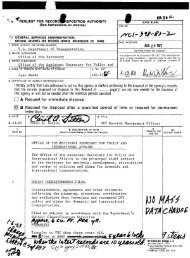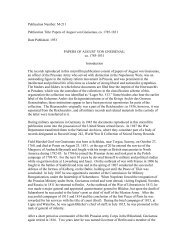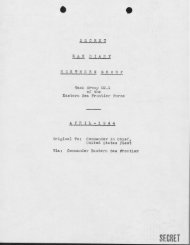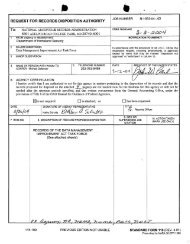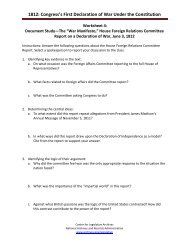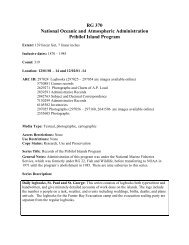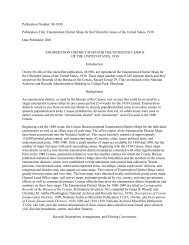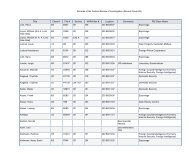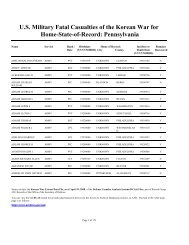HITLER'S SHADOW - National Archives and Records Administration
HITLER'S SHADOW - National Archives and Records Administration
HITLER'S SHADOW - National Archives and Records Administration
Create successful ePaper yourself
Turn your PDF publications into a flip-book with our unique Google optimized e-Paper software.
death. 2 She also wrote a personal memoir in 1947, made available to scholars<br />
in Munich’s Institute for Contemporary History <strong>and</strong> published in 2002. 3 She<br />
gave testimony to German authorities in 1954 as well as numerous interviews<br />
to journalists in the years after the war, most famously in a 2002 German<br />
documentary film titled Im toten Winkel (Blind Spot). She died the same year<br />
at age 81.<br />
On June 9, 1946, the CIC Field Office in Starnberg arrested Junge in Munich,<br />
<strong>and</strong> CIC agents interrogated her on June 13 <strong>and</strong> June 18. On August 30, CIC<br />
agents interviewed her a third time at the request of British intelligence, this time<br />
with 15 specific British questions. These summer 1946 interrogations are not<br />
cited in scholarly works on Hitler’s final days. Possibly released here for the first<br />
time, they contain occasional detail <strong>and</strong> nuance that the other statements do not,<br />
because they were Junge’s first statements on returning to the West.<br />
In the first session Junge recalled Hitler’s personal habits, confirming,<br />
albeit in new language, what is well known. She recounted Hitler’s withdrawn<br />
behavior after the German military defeat at Stalingrad in early 1943, his<br />
insistence that Germany’s miracle weapons would end the Allied bombing<br />
of German cities, <strong>and</strong> his belief that Providence protected him from the July<br />
20, 1944, assassination attempt. Junge remembered Hitler saying that if Claus<br />
von Stauffenberg, the leader of the conspiracy, would have shot Hitler face to<br />
face instead of using a bomb, then von Stauffenberg would at least be worthy<br />
of respect. This interrogation also confirmed the death of Nazi Party Secretary<br />
Martin Bormann by Soviet shelling in Berlin. Hitler’s chauffeur Erich Kempka<br />
witnessed Bormann’s death <strong>and</strong> told Junge about it shortly afterwards. In July<br />
1946 Kempka gave the same story to the International Military Tribunal. 4 At the<br />
time many people thought that Bormann escaped <strong>and</strong> fled to South America.<br />
His remains were not discovered until 1999. 5<br />
The second interrogation provides new detail on Junge’s attempted escape<br />
from Berlin after Hitler’s death, her arrest by the Soviets on June 3, 1945, <strong>and</strong> her<br />
repeated interrogations by the Soviets concerning Hitler’s suicide. The Soviets were<br />
also interested in any connections Junge might have to existing Nazi networks;<br />
they hoped to use her to uncover them. In September 1945, an unnamed Soviet<br />
official offered Junge his personal protection including an apartment, food, <strong>and</strong><br />
money. In return, Junge was to cooperate with Soviet forces <strong>and</strong> not to tell anyone<br />
6 | New Information on Major Nazi Figures



